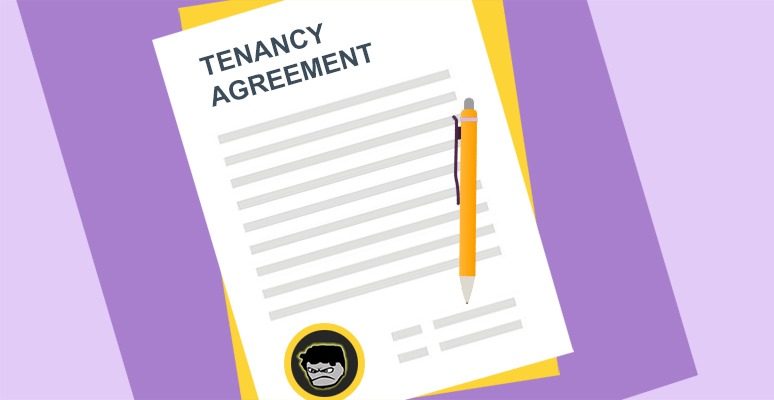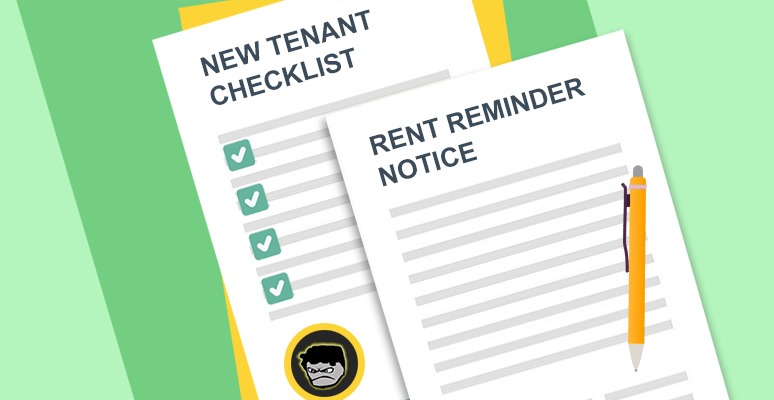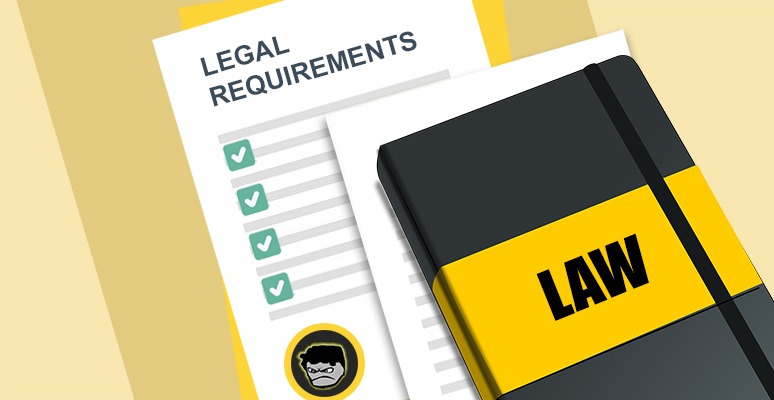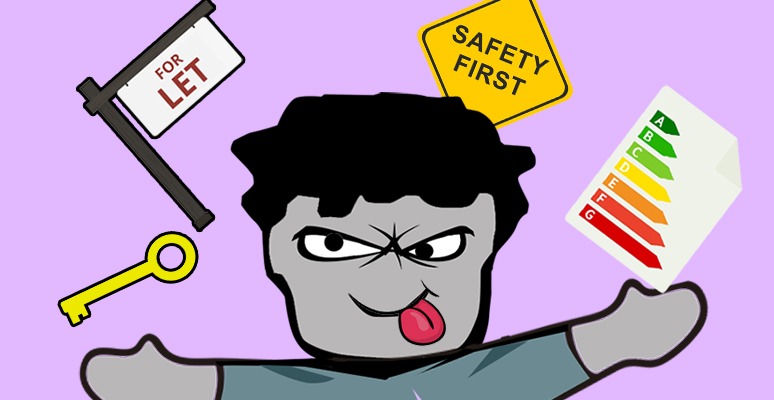
Short-term tenancies Vs Long-term tenancies: What’s the flipping difference and which should YOU offer?
If you haven’t been living under a rock (or actually, even if you have), you may have been hearing a lot of noise about BTL landlords ditching traditional long-term tenancies and migrating over to short-term lets (Airbnb style) because, to be blunt, it’s a whole lot more lucrative. So now you might be wondering, should you make the switch to Airbnb/short-term tenancies?
Even though I’m a traditional long-term BTL landlord through and through, I don’t really have a donkey in this race, so I’ll do my best to objectively cover the advantages and disadvantages of both short-term and long-term tenancies specifically from a landlords/hosts perspective.
I think there’s a lot to be said for both types of tenancies, and it doesn’t really boil down to “which is best” on a fundamental level, but more so, which better suits you and your property. Of course, there’s no reason why you can’t dabble with both types of tenancies to see what works best.
What is a Short-Let Tenancy (i.e. Airbnb)?
A short-term let is typically referred to as a rental agreement that is under six months, but more often than not, they range between one night and a couple of weeks., and that’s because short-lets are most commonly occupied by holiday-makers and travelling business folk.
Airbnb and other similar websites (i.e. the marketplaces where landlords advertise their short-let properties) have skyrocketed the popularity of short-lets; apparently there’s a huge demand for hotel alternatives, which is exactly why offering short-let occupancies have become a massive craze among both professional landlords and just about anyone with a spare room that’s looking to generate some extra cash.
Airbnb specifically have created and marketed their platform so well that it’s become incredibly easy for anyone with a property to potentially become a “host” (landlord), and now people even use their brand name (Airbnb) as a synonym for “short-let”
Don’t get me wrong, short-lets have been a ‘thing’ for a long time, but now they’ve become mainstream and trendy! Every dog and their Nan is doing it.
Advantages
- Higher rates – short-lets are typically priced at a day rate, which on average achieve 30%+ greater returns than if the same property was being let on a long-term tenancy!
From the stories I’ve heard, 30% is actually a pretty conservative return. Cha-ching!
- Flexible – short-lets are extremely flexible, because it allows for landlords to keep their property vacant as and when they please. That kind of flexibility is especially useful for landlords that have holiday homes that they wish to occasionally occupy themselves.
- Bad occupants don’t stay long – one of the biggest pitfalls of being a landlord is having to deal with rogue tenants. If you’re in this life-sucking landlording game for long enough, eventually you’re going to end up with a dud, and that can be catastrophic. Two of the most common problems with bad tenants is 1) rent arrears 2) tenants refusal to vacate.
While short-let occupancies can still attract cockroach tenants, you don’t usually deal with the same two common problems, because most people usually only use Airbnb for holiday purposes, so neither the good or bad occupants hang around for too long.
Disadvantages
- Time & effort – Dear lord is time and effort required to manage short-term lets, especially compared to long-term lets. The very nature of short-let tenancies is dealing with a continuous flow of new guests, which means there’s a lot more preparation to be done, which includes end of tenancy cleaning, general servicing, checking guests in and out. Tiring!!
- Repairs & maintenance – damage, wear and tear and maintenance costs are generally higher with short-term lets because of the high guest turnover. Also, short-term occupants are less likely to treat the property like a “home”. However, one thing to note is that Airbnb provide “Host Guarantee“, which includes property damage protection of up to $1 million USD for every host and every listing at no additional cost, so that’s pretty cool.
- Vacant periods – while short-lets bring flexibility, they also bring uncertainty; void periods can be normal and regular, and your property will make no money during those periods! The 30% or so premium a short-let commands can sink by the loss of income during the void periods.
- Extra costs – the landlord/host will need to cover costs that are normally covered by long-term tenants, such as utility bills, internet, TV licence and council tax. Essentially, there’s a lot more expenses to track.
- The 90-day restriction – properties in Greater London are restricted from letting their property for more than 90 days per year. The 90-day limit applies to both 90 consecutive days or 90 days spread throughout the year.
Yup, the rule is pretty choking, but to combat it, many landlords combine long-term tenancies (i.e. a 6 month tenancy) with multiple short-let tenancies (i.e. tenancies below 6 months) per year. During the long-term tenancy the landlord may achieve a lower rate compared to the short-lets, but it’s still usually significantly more lucrative than one long-term tenancy for a 12 month period.
Final thoughts on short-term lets
Needless to say, short-term lets are significantly more demanding and unstable than traditional long-term lets due to the required flow of new short-term tenants, but for those that have the will to put in the work, the financial returns can be extremely beautiful, especially if occupancy rates are reasonable (which will mostly depend on the location and desirability of the property). If the flexibility of getting to choose when the property is unoccupied is a requirement, then I honestly don’t see a better option than offering short-lets.
For those landlords that want the luscious returns but are reluctant to put in all the extra work required to service the conveyor belt of guests, it might be worth looking into Airbnb management companies. They serve a couple of primary purposes: 1) find and manage guests all year round 2) manage the property completely, from cleaning to maintenance and repairs 3) actively monitor rental rates so they get the best possible rates. Essentially, they take over the entire management and therefore make Airbnb effortless for landlords.
What is a [traditional] Long-Term Tenancy?
Advantages
- Steady rental income – long-term tenancies bring in regular and steady income every month. It’s a beautiful thing. Slow and steady wins the race, as they say!
One of the key aspects of being a successful landlord is having positive cashflow, and long-term tenancies generally aid in providing that.
- Relatively passive income – compared to managing short-lets, long-let tenancies are a scroll in the park.
As long as you do your due diligence and find pucker tenants, long-term tenancies are mostly subdued. From my experience, good tenants pay rent on time, but more importantly, they treat their rental accommodation like a home!
- Mortgage – you need to ensure your mortgage lender permits short-term lets.
Even if you have a BTL Mortgage, most lenders require a tenancy agreement to be an AST of at least 6 months. So even if you have a BTL mortgage policy, it may not grant short-lets.
However, with the boom in popularity, AirBnB friendly mortgages are now becoming widely available, and more lenders are starting to offer accommodating deals and products for short-let tenancies.
Disadvantages
- Lower rates – long-term tenancies typically don’t achieve rates as high as short-term lets. I’d say this is probably the primary reason for why landlords play the short-let game.
- Legal requirements – Dear Lord, the amount of red-tape that is gagged around the mouth of assured shorthold tenancies (ASTs) is frightening, and the regulations are only growing like a deformed arm-pit growth by the day.
Despite popular belief, most short-lets are ASTs, which means the legal requirements and regulations for short-lets are the same as long-lets. However, rightly or wrongly so – and perhaps largely due to sweet ignorance – there’s much more focus on crossing all the t’s and dotting the i’s for long-term tenancies, because generally speaking, short-term occupants don’t need to or wish to rely on their legal rights, because they’re mostly holiday-makers stopping by. It’s a completely different story for long-term tenants that make the rental property their residence; failing to ensure all obligations are met, legal or otherwise, is critical for self-preservation of landlords!
- Tenant hell – getting rid of rogue tenants can be financial suicide, not to mention soul-destroying! In my opinion, the laws protecting landlords against rogue tenants are total junk. For example, it can take several months to evict a tenant that refuses to pay rent, in the mean time the landlord has to continue paying the overheads e.g. mortgage payments. It can be absolute hell for landlords.
Final thoughts on long-term lets
Long-term lets are the preferred choice for landlords that want consistent rental income every month with the least amount of effort, but this nirvana wholly relies on finding good tenants. Moreover, with long-term tenants you build and maintain a relationship, potentially for several years, so it’s imperative that it remains healthy, particularly by being attentive, responsible and fair (that includes responding to all maintenance issues sharply). Being any other way usually rots the relationship, and that can lead to an extremely unpleasant and difficult working relationship.
Disclaimer: I'm just a landlord blogger; I'm 100% not qualified to give legal or financial advice. I'm a doofus. Any information I share is my unqualified opinion, and should never be construed as professional legal or financial advice. You should definitely get advice from a qualified professional for any legal or financial matters. For more information, please read my full disclaimer.


 Landlord Products / Services
Landlord Products / Services






















